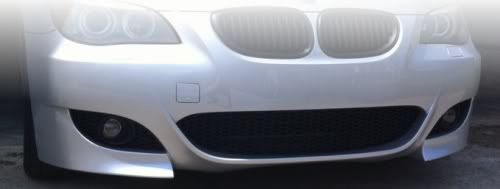Geeky wrote:
Anyways, thanks for the input guys. Even if the only suggestion I got was "don't". 
There's a reason for your responses being "don't". This is long, but I'm going to explain everything to you.
Allow me to explain why rattle cans are the devil.
So you have this can in your hand, with paint in it. Ever stop to think why the shelf life is so long? Rattle can paint, when sprayed, never REALLY dries. It'll dry to the touch, but it doesn't really dry like automotive grade paints do. Here's a story.
When I was working at the body shop that taught me everything I knew, we had a 2002 (pretty new at the time) Chevy S10 extreme truck come in on a lease and had been sent to auction. The guy that leased the car tried to fix a 3 - 3 1/2" dent in the lower passenger side of the cab by filling it with body filler (not pulling the dent out), and using the "factory color" paint in a spray can. Now pay attention, this is why rattle cans are a no no....
I WENT THROUGH FIVE, YES FIVE GRINDER DISCS JUST GETTING THE DARN PAINT OFF!!!!!
That's not including the 3-3 1/2" of body filler under that I had to strip out to fix it the proper way. The reason rattle can paint doesn't REALLY dry even though it seems dry to the touch is because if it did, the shelf life would be very very short, thus leading to wasted cans of paint.
There is absolutely no way you're going to get that to look decent by just painting the part where the clear is off... you're going to have to repaint the whole door... period. Why you ask?
Picture it like this... paint thickness is measured in microns. Let's say you only paint/reclear/whatever the part under the moldings. Not only did you use rattle can stuff, but... ok let me explain it this way.
Let's say the paint thickness on your door is 5 microns (just pulling a number out of the air here). You "paint" and "reclear" the area under the moldings, unless you have the tool and means to measure the paint thickness, you're not going to get it to be the same thickness, and it's going to stand out like Paris Hilton in the ghetto. (like a sore thumb) Even if you did manage to get it to be the same thickness, since the clear wasn't sprayed on all at the same time, you're going to be able to tell VERY easily.
Even the most experienced of painters are going to have a hard time just painting one part of a door and making it look good... if not having it be damn near impossible. Even when "blending" areas that are painted, a professional painter still re-clears the whole panel. For example:
Let's say you have a dent at the part of your fender up against your door. When a painter "blends" the fender into the door, he/she repaints the fender, and then "blends" the paint into the first part of the door touching that fender. Even though the first 1/4 of the door has fresh paint on it, the remaining 3/4 of the door gets a nice new shiny clear coat.
ANYTHING automotive is something that you should not cheap out on. If APC made an engine replacement for your car... would you buy it... or get something that's going to be more reliable but cost more?
Bottom line, you get what you pay for. If you cheap out on the work, you're going to get just that... a cheap looking car. If you save up the money and do it the RIGHT way, you won't be disappointed. Look at my sticky at the top of the forum for some ideas on what to look for when going to a shop.
Shop around, get estimates, and MAKE SURE THE SHOP GUARANTEES THEIR WORK!!!!! As long as they guarantee their work, if something happens to the paint... they are responsible for fixing it on their dime. Make sure their guarantee is in writing, and also note that guarantees do not apply to rock chips and normal wear and tear on paint. If it peels off, that's covered. If the clear coat clouds up, that's covered (unless you didn't follow their post paint waxing instructions... i.e. DO NOT WAX for at LEAST 90 days after paint).
That my friend is why you're getting the "don't do it" replies. If it bothers you that much (you especially want to get that taken care of ASAP if there's bare metal showing... that's going to rust in no time, molding on or not), put the moldings back on and get it into a shop ASAP.
Keep in mind, odds are with it being red and the paint that old, they're probably going to have to blend your doors. Maybe not, but it's still a possibility. Red is one of those colors that fade quite easily, oh.... Yes red paints are more expensive than other colors, but a reputable shop is not going to charge you extra for the paint. (just another FYI)
The colors that "age" the worst IMHO are:
Red: fades pretty easily over time
White: fades and stains easily over time (most people don't notice because it's gradual... same for reds fading)
Black: believe it or not black fades as well. My 1st Sunfire was black (and stayed that way up until it was stolen)... it had half arsed body work on the drivers door, and when we fixed it and threw some paint over it temporarily until I was done fixing the fender, the black we sprayed on was black (durrr), but the black on the fender looked navy blue or something compared to the new black.
Red and white of course being the worst for "color matching". A lot of people don't realize there are literally probably hundreds of shades of whites to begin with... and you also have to consider the many "variances" of the same color. Variances are "shades", btw. The longer a color has been in production, the more variances it's likely to have because the likelyhood of everything being exact is not good... even if computer mixed. The tints and pigments used to mix paints could have a slight differences to them, ... there's many reasons for this.
Anyway, hope that helped, and hope you take it to an actual shop and get it fixed the right way.












